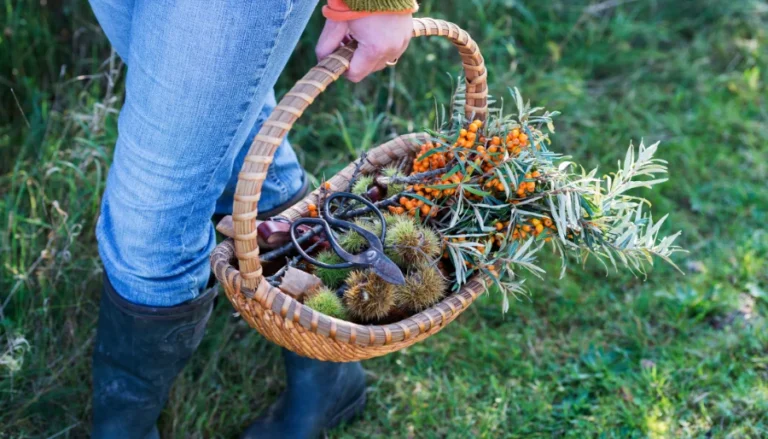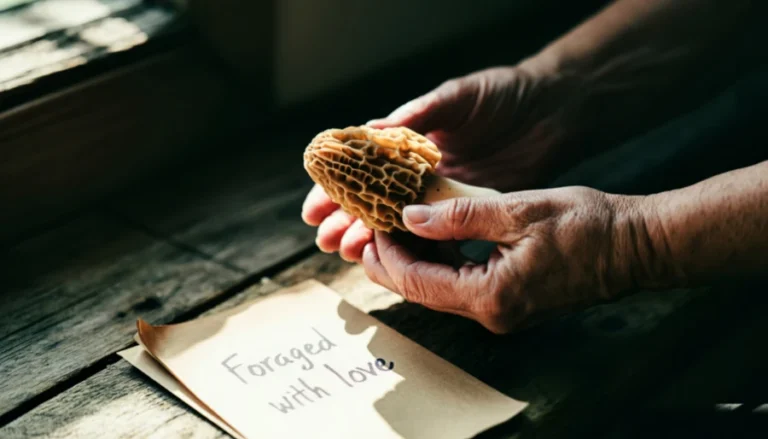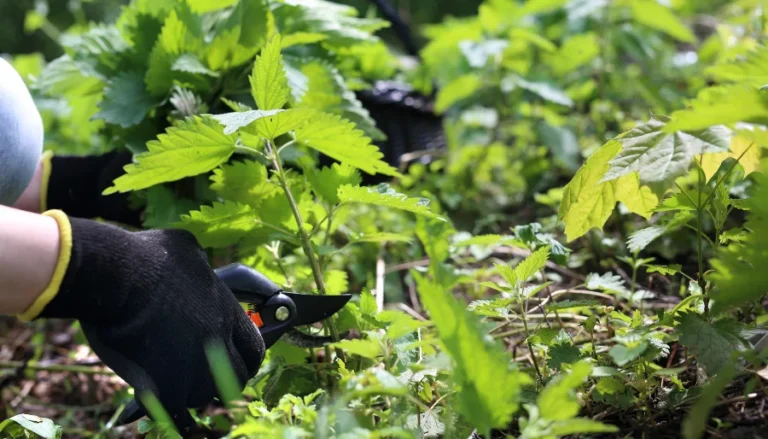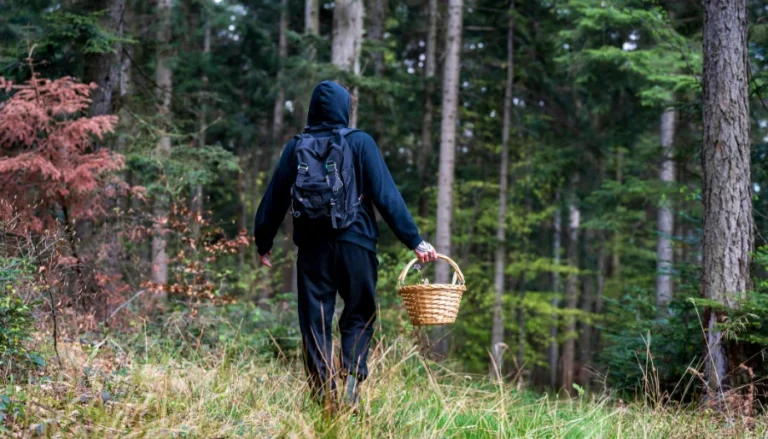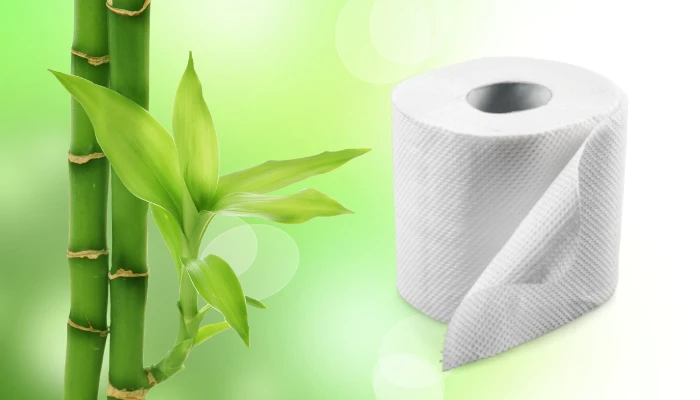Spring forests smell slightly different, if you’re paying attention. Take a deep whiff. When wild garlic breaks through the leaf litter, the air fills with a faint onion-garlic scent.
Seasoned foragers know this means dinner, or profit.
Grocery shoppers, on the other hand, can walk down the produce aisle and toss a few bulbs of store garlic into their basket without much thought.
Both come from the allium family, but they are worlds apart in flavor, price, and the experience of finding them.
The Garlic Story
Garlic’s story is as old as human civilization. Ancient Egyptians placed garlic bulbs in the tombs of pharaohs, believing it offered strength and protection in the afterlife. Greek athletes chewed it before competitions, while Roman soldiers carried it into battle for endurance.
Hippocrates himself recommended garlic as a remedy for digestive problems, infections, and even respiratory illness. Across Asia, particularly in China and India, garlic was central to both medicine and diet thousands of years ago.
What we call “store garlic” today — Allium sativum — was first domesticated in Central Asia and spread quickly through trade routes until it became a kitchen staple across nearly every culture. Garlic, very literally, helped shape both ancient medicine and cuisine.
And our commercially appealing garlic (allium sativum) is now big business, with a global market size of $22 billion. By 2035, the value of the global garlic market is expected to reach $36 billion annually.
Wild garlic, though less documented in mainstream history, has its own fascinating lineage.
Archaeologists have found charred wild garlic bulbs in Mesolithic sites in Denmark, meaning our ancestors were gathering and eating it over 6,000 years ago.
In early medieval Europe, it was so valued that Charlemagne ordered it cultivated in imperial gardens. Celtic and Saxon traditions tied wild garlic to spring health, with folk sayings urging people to “eat ramsons in May” to stay strong through the year. Even under Irish Brehon law, stealing wild garlic from another’s land was punishable unless it was for healing use. Garlic was food, medicine, and even a kind of seasonal ritual.
That connection hasn’t faded. Modern chefs still chase wild garlic for its fleeting season and delicate taste. After all, seasonal rarity has always increased popularity.
René Redzepi of Copenhagen’s famed Noma has used wild garlic leaves in foraged spring dishes, while Hugh Fearnley-Whittingstall has long celebrated it in River Cottage recipes, turning it into pestos, soups, and sauces to show off its freshness. Whether wild or cultivated, garlic has always been more than just another plant on our plates.
If you want to learn more about store bought garlic, including black garlic, check out our in-depth all things garlic article here.
Flavor: Fresh vs Bold
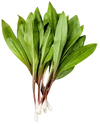
Wild garlic (ramps, ramsons, bear’s garlic)
Mild, green, herbaceous. The leaves taste fresh and grassy with a hint of garlic. Bulbs are closer to onion. Chefs love them because they add depth without overpowering. Wild garlic are also known as ramps, ramp onions, wild onions, and wild leeks in the U.S.
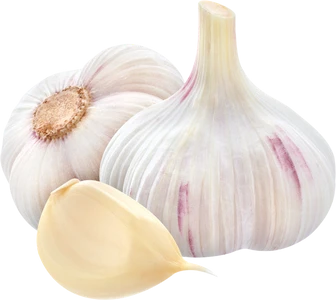
Store garlic (softneck and hardneck varieties)
Raw cloves bite sharp and spicy. Roasting makes them surprisingly sweet. This is the garlic that anchors sauces, stir-fries, soups, and almost every savory dish worldwide. It’s cheap and always available.
If you want subtle and seasonal, wild garlic delivers. If you want an intense, reliable punch, commercial garlic wins. And, of course, if you need garlic in quantity, buy store bought because it’s cheap and always available.
Nutrition and Health
Wild garlic is rich in vitamin C, iron, magnesium, and sulfur compounds. Studies suggest it may lower blood pressure and support circulation. Traditional healers used it as a spring cleanse food.
Store garlic is loaded with allicin, a compound formed when cloves are chopped or crushed. Allicin is linked to antimicrobial and anti-inflammatory benefits, making store garlic famous for immune support, just as Hippocrates said 2,450 years ago.
Both bring antioxidants and heart-healthy compounds.
But wild garlic is lighter, fresher, and only available for a few weeks per year, which is also why it’s such a proven money-maker for foragers selling in the local farmer’s market. Please follow sustainable foraging practices when you’re collecting your fresh wild garlic. It makes a huge difference!
| Nutrient | Wild garlic (ramps) Allium tricoccum/A. ursinum |
Garlic, raw (store-bought) Allium sativum |
|---|---|---|
| Macros | ||
| Calories | ~23–37 kcalvaries | 149 kcal |
| Protein | 0.9–3.3 grange | 6.36 g |
| Total carbohydrate | 2.3–5.1 g | 33.06 g |
| Dietary fiber | ~2.2–2.8 g | 2.1 g |
| Total fat | ~0.3–1.0 g | 0.5 g |
| Vitamins | ||
| Vitamin C | ~45–80 mg (50–89% DV) high | 31.2 mg (35% DV) |
| Vitamin A (as RAE) | ~90–200 µg RAE (10–22% DV) beta-carotene rich | 0 µg RAE (0% DV) |
| Vitamin K | ≈47 µg (39% DV) | 1.7 µg (1% DV) |
| Vitamin B6 | ≈0.24 mg (14% DV) | 1.235 mg (73% DV) |
| Folate (DFE) | ≈64 µg (16% DV) | 3 µg (1% DV) |
| Minerals | ||
| Calcium | ≈59 mg (5% DV) | 181 mg (14% DV) |
| Iron | ≈2.13 mg (12% DV) | 1.7 mg (9% DV) |
| Magnesium | ≈28 mg (7% DV) | 25 mg (6% DV) |
| Phosphorus | ≈35 mg (3% DV) | 153 mg (12% DV) |
| Potassium | ≈180 mg (4% DV) | 401 mg (9% DV) |
| Manganese | ≈0.48 mg (21% DV) | 1.672 mg (73% DV) |
| Zinc | ≈0.12 mg (1% DV) | 1.16 mg (11% DV) |
| Selenium | ≈1.0 µg (2% DV) | 14.2 µg (26% DV) |
| Copper | ≈0.12 mg (13% DV) | 0.299 mg (33% DV) |
• Garlic (raw, Allium sativum) values from USDA FoodData Central as displayed by MyFoodData (per 100 g). These include Vitamin C 31.2 mg, B6 1.235 mg, Ca 181 mg, Fe 1.7 mg, Mg 25 mg, P 153 mg, K 401 mg, Mn 1.672 mg, Zn 1.16 mg, Se 14.2 µg.
• Wild garlic (ramps) does not yet have a unified USDA entry; composition varies by species/part (leaf vs bulb), location, and season. Peer-reviewed and extension sources report high Vitamin C, often **~63–80 mg/100 g fresh** leaves, and meaningful provitamin-A carotenoids. Examples: 63.3 mg/100 g fresh (MDPI 2025 study of wild garlic leaves); 80 mg/100 g fresh (literature summarized in research reports).
• Ramps are also noted as rich in beta-carotene (precursor to Vitamin A); conversions shown as RAE are estimates from reported beta-carotene content ranges (conservative). Extension/encyclopedia summaries concur on high Vitamins A & C.
Cooking and Kitchen Uses
Wild garlic is best used like a herb. Toss the leaves into salads, pestos, butter spreads, omelets, or risottos. Add bulbs to stir-fries or soups. Even the flowers are edible and make striking garnishes. Because the flavor is delicate, add wild garlic at the end of cooking.
Store garlic is for cooking because it handles heat well. Minced into sauces, roasted whole, or sautéed, it flavors almost every cuisine. Of course, some raw pressed garlic in dressings or dips adds a nice spicy kick and is shelf-stable in a vinegar-based dressing.
Price and Availability
Wild garlic (ramps in the U.S., ramsons in Europe) is expensive and rarer.
Farmers markets often sell them for $20–$40 per pound in season. In high-demand cities like New York or London, prices can spike even higher due to limited supply. Foragers, of course, can collect them for free and turn wild ramps into a nice side hustle.
Wild garlic is also called ramp onions in some parts of the United States.
Store garlic is cheap and everywhere.
Typically, $2–$4 per pound in U.S. supermarkets, depending on whether it’s conventionally grown or organic. Bulk wholesale prices can drop lower.
When compared pound to pound, wild garlic is 10x more expensive than store garlic. The difference is scarcity. Wild garlic is available for 4–6 weeks each spring. Store garlic is available year-round.
Where and When to Find Wild Garlic
North America (Ramps)
- Regions: Eastern North America, from Georgia and Alabama north through the Appalachian Mountains, across to Ohio, Pennsylvania, and up to New England and southern Canada.
- Season: Late March in the South, April in the mid-Atlantic, and into May in New England and Canada.
- Habitat: Rich, moist, shaded deciduous forests. Look near maple, beech, or poplar trees.
Europe (Ramsons/Bear’s Garlic)
- Regions: Widespread across northern and Central Europe. Common in the UK, Germany, Belgium, Poland, and France.
- Season: March through May, depending on latitude.
- Habitat: Damp woodlands, often carpeting the forest floor.
How to Identify Wild Garlic

- Broad, lance-shaped leaves that resemble lily of the valley.
- Distinct garlic smell when crushed — this is the test. If it doesn’t smell of garlic, don’t eat it.
- White star-shaped flowers appear later in the season, but leaves are best before flowering.

Responsible Foraging
Harvest lightly and don’t get greedy.
Take only a few leaves per plant and avoid digging bulbs unless it’s abundant. In many areas, ramps are considered at risk due to overharvesting.
Check local rules and follow them closely.
Some U.S. states restrict foraging on public land. In the UK, gathering for personal use is often allowed, but commercial harvesting is restricted.
Safety first to prevent accidental poisonings.
Always double-check identification. Lily of the valley grows in similar habitats, but is poisonous. The garlic smell test is reliable.
Storage and Preservation
Here’s another big difference between wild garlic and the commercial garlic!
Wild garlic is best eaten fresh. If you can’t eat it freshly foraged, wrap them in a damp towel and keep in the fridge for 3 to 4 days. You can freeze the chopped leaves in oil for later use. I use a standard cheap ice cube tray.
Now, store bought garlic should never be kept in the fridge. Just keep the bulbs in a cool, dry place, and they’ll last for weeks or months. This longevity is one of the reasons why commercially grown garlic is so popular, and cheap.
Which One Should You Choose?
Wild garlic is fleeting, mild, and seasonal. It connects you to the forest and to spring itself.
Store garlic is the backbone of global cuisine. It’s cheap, consistent, and always on hand.
The smart choice is not either-or. This isn’t an if this or that situation!
Use store garlic as your kitchen staple, and enjoy wild garlic when spring gives you the chance. Do both!
More To Discover
- The First Lithium-Free, Sodium Battery EV Will Hit the Roads in January, Proving A Game Changer for the Auto Industry and Environment
- JBS’s Greenwashing Charges As NY Demands Accountability For Company With Italy-Sized Emissions
- U.S. Coast Guard Helps Vanuatu Expose Illegal Fishing by Chinese Vessels
- The UK Has A Biomass Problem: Sustainability Questions Threaten Green Energy Goals In Biomass Industry
Final Thought
Foraging wild garlic is more than gathering food. It’s stepping into a tradition that ties people to the seasons and to the land. It’s a throwback and, sometimes, a profitable one when done correctly.
Store bought garlic may keep your pantry stocked, but wild garlic reminds you that flavor is also about timing, place, and patience.









